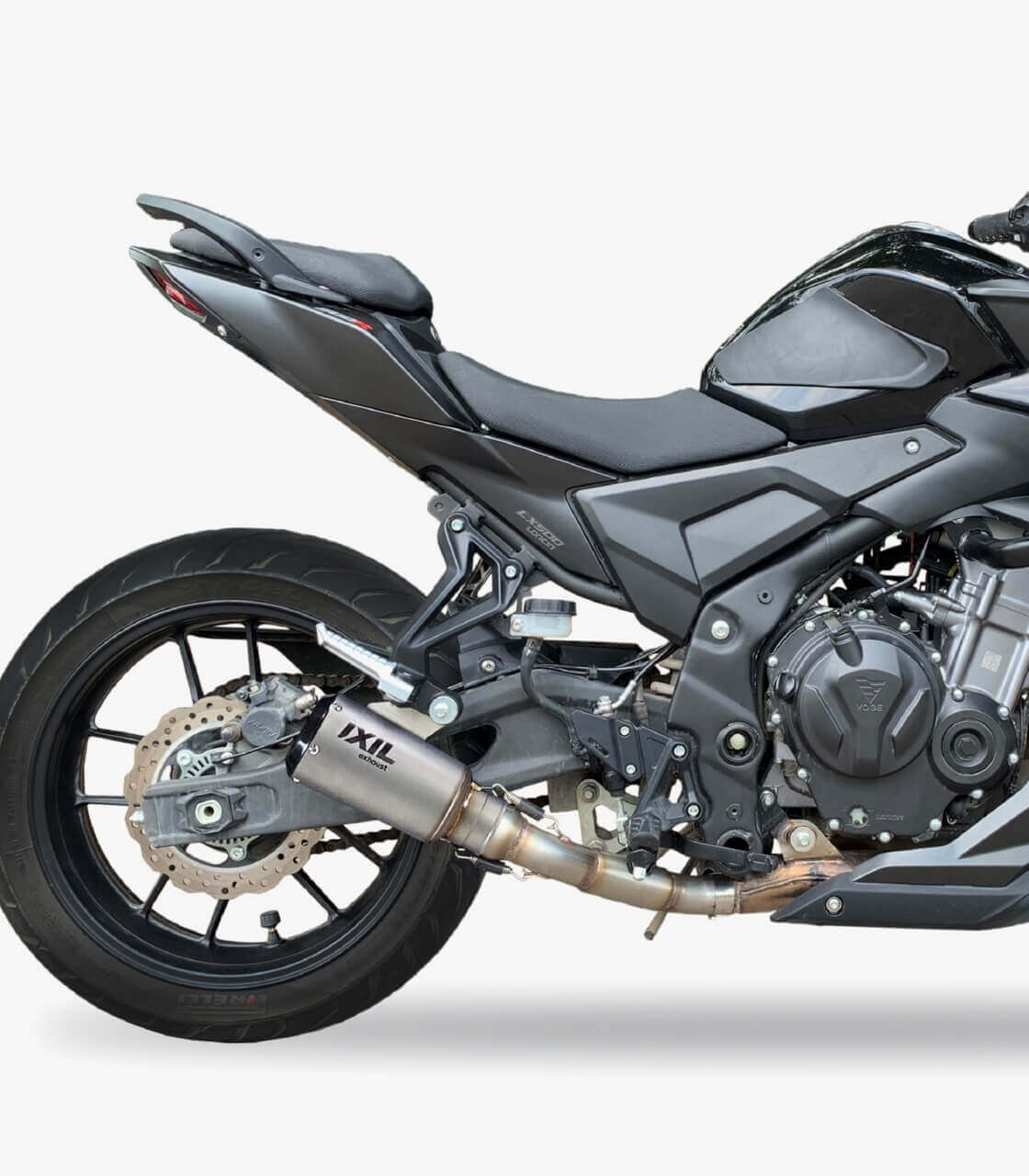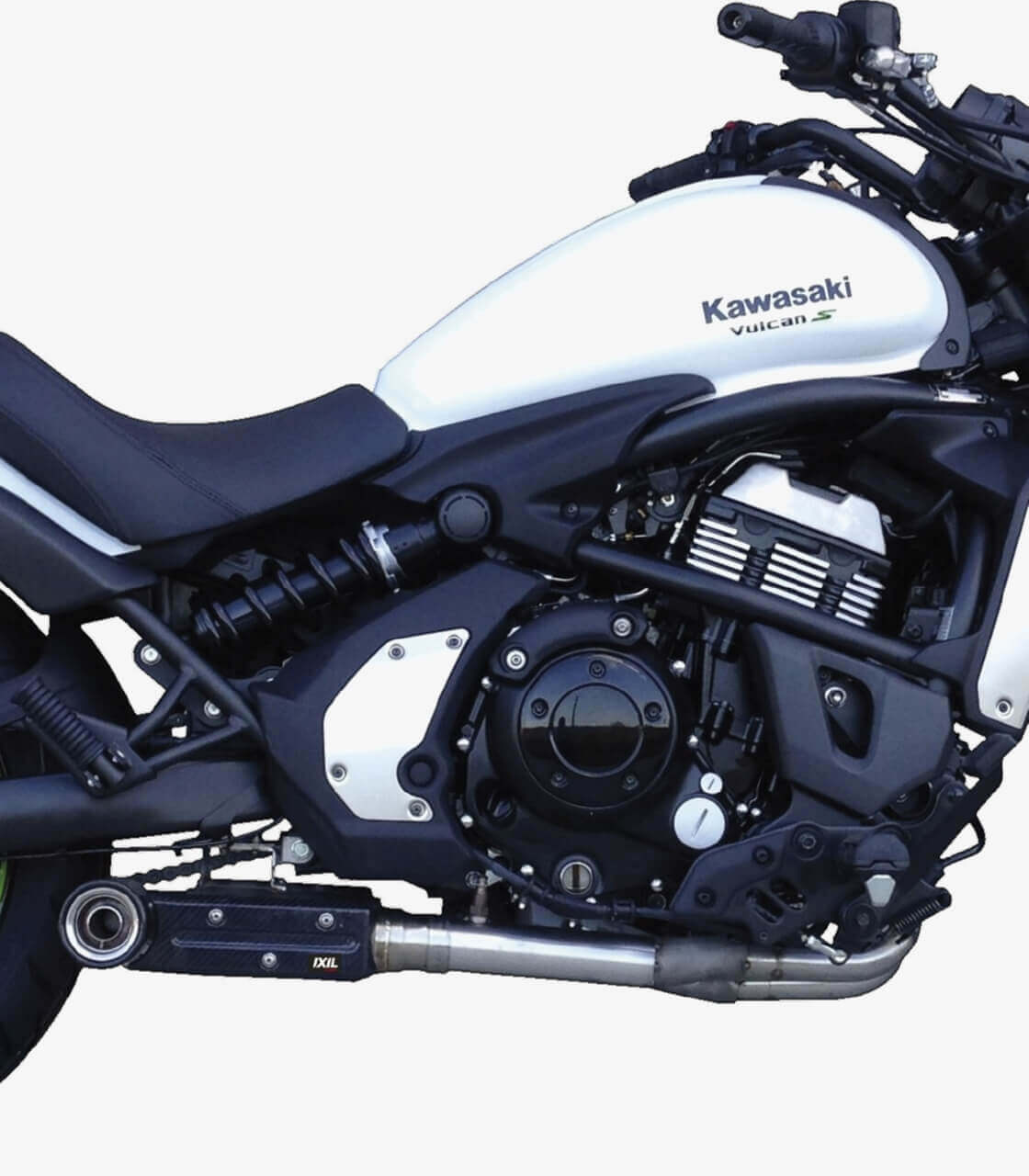Hello everyone, motorcycle fanatics and fanatics! Have you ever thought about changing the exhaust pipe on your bike, but in the end you never made up your mind because of fear or indecision?
In today's post we will explain everything you need to know before changing the exhaust on your bike and how to do it step by step so you don't have any problems. So without further ado, let's get started!
Things you should know before changing the exhaust pipe of your bike
The first thing to know is what an exhaust pipe is and what it is for, what it is made of and important things to take into account when buying an exhaust. So let's explain each of these sections:
What is a motorcycle exhaust and what is it for?
A motorcycle exhaust is a fundamental part for the correct functioning of our motorcycles. Its function is very simple, it expels or evacuates to the outside the gases that are produced after the combustion process and thus reduce the temperature of the motorcycle and retains some particles that can pollute the environment.
What parts make up an exhaust pipe?
It is formed by the collector, which is in charge of collecting and gathering the gases and directing them through the pipe to the catalytic converter where the pollutants of these gases are reduced and to the muffler which is in charge of reducing the noise generated and finally leaves our motorcycle through the exhaust pipe.
Things to take into account when buying an exhaust system
The most important point without a doubt when buying an exhaust for your motorcycle is if it is homologated or not, since this could give you problems when passing the technical inspection or ITV. To know if it is homologated, the exhaust itself must have some kind of code or numbering engraved on it that certifies that the exhaust is fully homologated, in addition to including in the package a paper that certifies this certification. If you are looking for homologated exhausts we recommend you to look at our Ixil and Ironhead exhausts catalog, since most of the exhausts are fully homologated. If you are not sure if the exhaust you are interested in is homologated, contact the seller so that he can give you all the information you need.
Another very important point is the compatibility with your bike. You should look for the exhaust that has been manufactured specifically for your bike, otherwise you will most likely not be able to mount or install it on your bike and with the price they have I do not think anyone wants that. So before you buy an exhaust, make sure that it will fit perfectly with your bike.

And lastly, take into account what material is the exhaust you are going to buy, as each of them has its pros and cons. The aluminum ones are quite light but also more expensive, its resistance is lower but it is much easier to repair in case of a blow or fall. The stainless steel ones are cheaper than the aluminum ones but they weigh more and their resistance is higher. The carbon ones are lighter than the previous ones but of low resistance as the aluminum one and it is very easy to break with any type of blow or fall and they are also much more expensive than the previous ones. And finally, the ones that really are the best but their price is very high, are the titanium ones, very light and very resistant, the perfect combination, but obviously you pay for it.
How to change the exhaust of a motorcycle
Once explained tips and things to consider before buying a new exhaust, we will explain first how to remove the current exhaust of your bike and then how to mount the new one, all step by step so there is no room for doubt. So let's go for it!
How to remove the exhaust from your bike
- To remove the exhaust from any 4-stroke motorcycle, you have to loosen the frame in the clamping area.
- In addition to this, we must also loosen the aluminum flange which joins the silencer to the manifold. This flange sometimes has a protector so that it is not seen and is well covered, so it will have to be removed to reach the fixing screw.
- Now that we have loosened the flange, what we must do is to remove the fastening screw with the chassis.
- Once the screw is removed, we will have to move the silencer up and down very carefully, until we take it out of the collector by pulling it out.
How to mount the new exhaust on our bike
- Once removed the old exhaust, we will have to put copper paste in the collector union. Sometimes the manufacturer already includes this paste, if not you will have to buy it. The function of the paste is to make easier the assembly and disassembly of the exhaust in the future and to avoid that it can be half-soldered since it is an area with high temperatures.
- Once the paste is on, we will introduce the silencer in the collector, but before joining it completely, we will put the flange without tightening it completely and we will do the same with the union screw of the silencer with the chassis. Thus we will have the complete system.
- Then, when we fit everything, we will have to tighten the flange and once tightened we will do the same with the union screw with the chassis. If, as we mentioned before, the flange of your exhaust had a protector, we will have to put it back.
How to change the complete exhaust system of a motorcycle
If we want to change the complete system, that is to say, both the silencer and the manifold, we will have to do some more steps.

To change the manifold, you may have to remove the exhaust valve and the lambda probe, as we will not be able to mount these parts or components. This is something usual, since a great amount of complete exhausts are not homologated to circulate in urban areas and they are only to be used in circuit.
How to remove the complete exhaust line from your motorcycle
- We will have to see if it can be done without having to remove the radiator from the bike and only be able to unhook it a little from the inner fixing to have more space. This is important because if you have to disassemble it, you will have to do a purge to remove the air inside. If we do the latter wrong, it can cause us to damage the engine by excessive heat.
- Changing the manifold will surely cause that the engine of our motorcycle does not work well in the low and medium rpm area, improving the behavior in high revolutions. To make a correct change of the manifold, you will have to make several adjustments to the parameters of your motorcycle, such as adding a high flow air filter and reprogramming the injection curve of the control unit.
- If your bike's ECU is not programmable, you will have to buy an auxiliary or replacement ECU that can be added to the original one.
- Once this is taken into account, to change the manifolds we will have to do the above mentioned and we will disassemble and annul the exhaust valve.
- Next we will have to disassemble the oxygen probe or lambda probe. In some cases, depending on the bike, you will have to add an oxygen sensor or lambda sensor override so that the new control unit can apply the preset injection map without any problem.
- And finally, when we have cancelled the oxygen or lambda sensor, we will have to loosen all the nuts that are in charge of joining the manifold with the cylinder head. But you must be careful and check the gaskets between the manifold and the cylinder head, which are very necessary so that our bike does not have exhaust gas leaks in that area.
How to mount the new complete exhaust line on our motorcycle
- To mount the new manifold, we must square the cylinder head with the manifold and place the gaskets mentioned in the previous step. And we must also check the intermediate fixings of the new manifold that we are installing to point the screws and that in this way it will be easier to mount the screws that will fix the cylinder head.
- When we have everything well squared and fitted, we will have to tighten the nuts that join the cylinder head with the manifold. Once this is done, we will have to tighten the screws that join it with the lower part of the frame.
- And finally, we will replace the flanges that had the exhaust that we have disassembled for new ones (which sometimes are included by the manufacturer) and we will install the silencer as we have explained in the previous case of how to mount an exhaust that is not full line.

